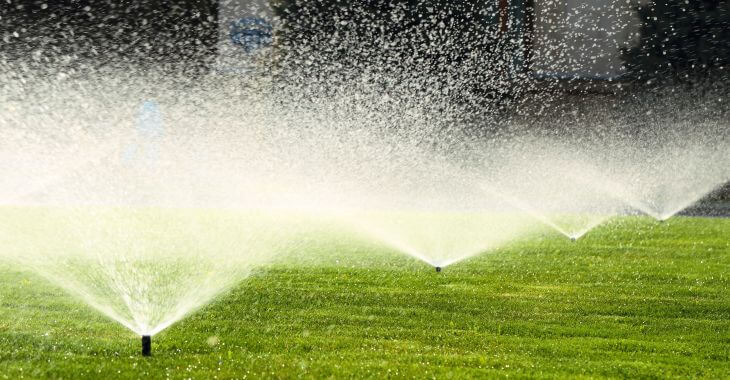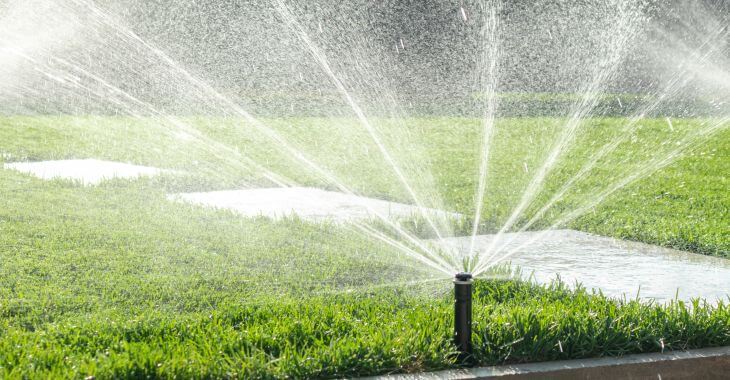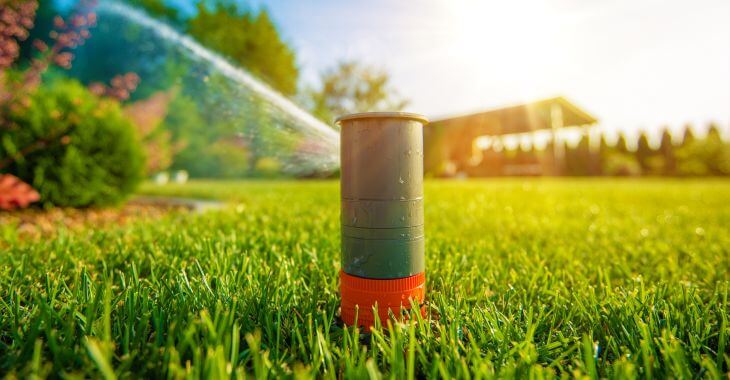How Many Sprinkler Heads Per Zone? Understanding Water Pressure and System Design

Properly designing an irrigation system involves careful consideration of water pressure and the number of sprinkler heads per zone. Do you know how many sprinkler heads per zone for 40 psi or how many sprinkler heads per zone for 50 psi? What if there is not enough water pressure for sprinklers?
Determining the optimal number of sprinkler heads per zone is essential to ensure adequate water distribution and uniform coverage across the landscape. The following is how to calculate the number of sprinkler heads per zone based on water pressure and strategies for addressing low water pressure.
Factors Affecting Sprinkler Head Placement
Before delving into calculations, it is important to understand the factors that influence sprinkler head placement and spacing. These factors include:
- Water Pressure: The available water pressure at the irrigation system’s point of connection plays a crucial role in determining the number of sprinkler heads that can be effectively operated in a single zone.
- Flow Rate: Each sprinkler head has a specific flow rate, which refers to the volume of water it emits per unit of time. Flow rate is measured in gallons per minute (GPM) or liters per minute (LPM).
- Coverage Area: Sprinkler heads are designed to provide coverage over a specific area based on their spray pattern, trajectory and radius. The coverage area of each sprinkler head must be considered when determining spacing and placement.
Also, different plants and landscaping features may have varying water requirements based on factors such as species, soil type and sun exposure. Adjustments to sprinkler head placement may be necessary to accommodate these requirements.
Calculating How Many Sprinkler Heads Per Zone
To calculate the number of sprinkler heads per zone, you will need to consider the available water pressure and flow rate of the irrigation system. Here is a step-by-step process for determining sprinkler head spacing:
1. Determine Available Water Pressure
Start by measuring the water pressure at the irrigation system’s point of connection using a pressure gauge. Typical residential systems may have water pressure ranging from 40 to 60 pounds per square inch (psi).
2. Consult Sprinkler Manufacturer Specifications
Refer to the manufacturer specifications for the sprinkler heads you plan to use. These specifications will provide information on the recommended operating pressure range and flow rate for each sprinkler head model to determine how many sprinkler heads per zone for 40 psi, 50 psi or 60 psi.
3. Calculate the Flow Rate per Sprinkler Head
Multiply the flow rate (in GPM or LPM) of each sprinkler head by the desired number of sprinkler heads per zone. For example, if a sprinkler head has a flow rate of 1 GPM and you want to install five sprinkler heads in a zone, the total flow rate for that zone would be 5 GPM.
4. Check Water Pressure Capacity
Compare the total flow rate calculated in step 3 to the available water pressure at the point of connection. Ensure that the total flow rate does not exceed the system’s capacity to maintain adequate pressure for all sprinkler heads in the zone.
5. Adjust Sprinkler Head Spacing
Based on the available water pressure and desired coverage area, adjust the spacing between sprinkler heads to ensure uniform water distribution without overtaxing the system. Consider factors such as the radius of the throw and overlap between adjacent sprinkler heads to achieve optimal coverage.
Dealing with Low Water Pressure
In some cases, low water pressure may pose challenges when designing an irrigation system or determining sprinkler head placement. Here are some strategies for addressing low-water pressure issues:
- Install Pressure-Boosting Equipment: Consider installing a pressure-boosting pump or pressure regulator to increase water pressure at the point of connection. These devices can help ensure adequate pressure for irrigation system operation, especially in areas with low municipal water pressure.
- Use High-Efficiency Sprinkler Heads: Choose sprinkler heads with low precipitation rates and efficient distribution patterns to maximize water efficiency and minimize the impact of low water pressure. Options such as rotary nozzles or drip irrigation systems can help optimize water usage in low-pressure situations.
- Divide Zones Strategically: If low water pressure persists, divide the irrigation system into multiple zones with fewer sprinkler heads per zone. This allows for better pressure distribution and ensures consistent water delivery across the landscape.
- Optimize System Design: Review the layout and design of the irrigation system to identify potential inefficiencies or areas for improvement. Adjustments such as reducing pipe length, minimizing elevation changes, and optimizing valve placement can help improve water pressure and system performance.
By carefully considering water pressure, flow rates, and sprinkler head placement, you can design an irrigation system that effectively meets the watering needs of your landscape while maximizing water efficiency and minimizing the risk of damage from over- or under-watering.

If you encounter challenges with low water pressure, consult with a professional landscape designer to explore potential solutions and ensure optimal system performance. With proper planning and design, you can achieve a lush, healthy landscape while conserving water and protecting your property.
